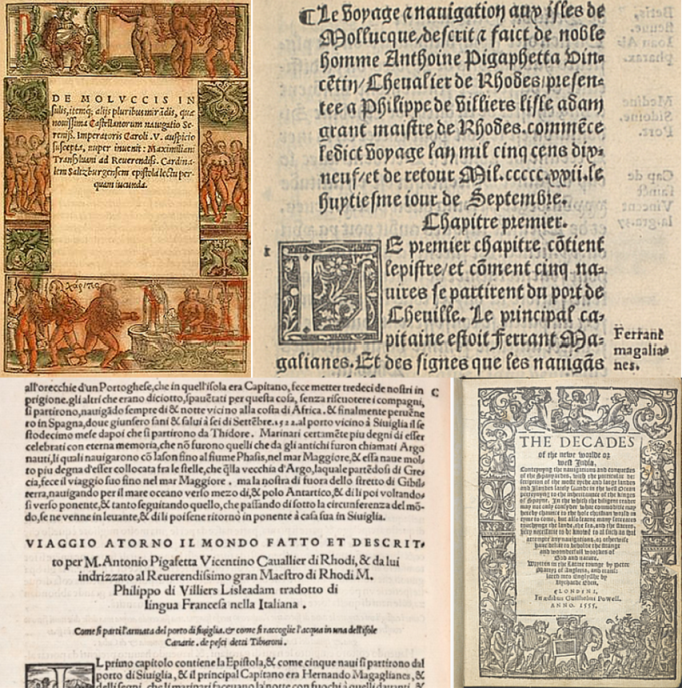We started this chronological review to make the time frame clearer for what followed when the Magellanic Expedition stumbled on our archipelago in 1521 while crossing the Pacific Ocean westwards to the Moluccas to explore the lucrative spice trade. After some island-hopping for food and rest, the fleet’s crew found hospitable anchorage six days later in an island called Mazaua. There, the voyage chronicler Antonio Pigafetta duly recorded the first Holy Mass on March 31that year.
After five centuries, however, we Filipinos are still grappling with how Mazaua got displaced by the unlikely island of Limasawa as the site of that first Mass. Despite overwhelming evidence and extant historical, maritime, and geographic records to the contrary, our national government and church authorities have already thrice affirmed Limasawa as the true site.
So how did both world history and our own nation’s history go so wrong? Why are we facing this grievous distortion of our heritage as a people?
Last week, in Part 8 of this chronological review, we saw how in the year 1522, extreme ambition and great hurry had garbled the historiography of a landmark event. Maximilianus Transylvanus, the courtier and personal secretary to the Roman Emperor Charles V, was so keen on overtaking the Magellanic chronicler Antonio Pigafetta in getting a book published about the first circumnavigation of the world that he did three unseemly things.
First, he freely appropriated Pigafetta chronicles for
“De Moluccas Insulis” for his own first-person account of the Magellanic voyage without Pigafetta’s by-your-leave. Second, he chopped off from Pigafetta’s chronicles no less than 20 days of Magellan’s whole sojourn in Mindanao—throwing out both the first Easter Sunday Mass in Mazaua and the ritual planting of the Cross. Third, he moved the narrative in the wink of an eye to Cebu where he knew Magellan’s actions would command much greater reader interest—like openly boasting about Spain’s military might, proselytizing the natives with a strong arm, then enraging the island chieftain Lapulapu to the point of getting Magellan slain in the Battle of Mactan.
Transylvanus’ close associate, the Italian geographer-travel writer Giovanni Battista Ramusio, did even worse in his retelling of the Magellanic sojourn. In a 1536 pirate Italian translation of Pigafetta’s chronicles that Ramusio acknowledged to be his own only in its 1563 edition, the locality of the Magellanic sojourn got even more garbled. Ramusio’s translation did restore the first Holy Mass that Transylvanus had knocked off from
“De Moluccas Insulis,” but instead of the Mass getting officiated in Mazaua, his Italian translation moved it to the “island of Butuan.”
Magellan’s sojourn in the Philippine archipelago got even more garbled when Italian historian Peter Martyr d’Anghiera included it in
The Decades of the New World, his anthology in Latin of Spain’s conquests in the Age of Exploration. As translated into English by Richard Eden, the book translocated the Mazaua anchorage to “the island of Butuan.” In Peter Martyr’s version, the long episodes in Pigafetta’s Mazaua where Magellan and his men socialized and fraternized with the native chieftains were moved to Butuan, culminating in the holding of the first Holy Mass and planting of the Cross in that bustling port.
Then, instead of the Magellanic fleet sailing off from Pigafetta’s Mazaua, the Peter Martyr version made it depart from Butuan, passing the islands of Zubuth (Cebu), Messana (Mazaua), and Calaghan—again conflating the Butuan episodes with those that actually took place in Pigafetta’s Mazaua.
FACT CHECK: How three published accounts of the Magellan’s sojourn in our archipelago were factually at odds. From 1640 onwards, a string of well-meaning but ill-informed evangelists and clerics further compounded the confusion by espousing that what started as the invented Dimasawa—not Mazaua—was the actual site of the first Holy Mass.
(Next:
Getting our history right after 500 years – Part 10) May 27, 2021
This essay, 2,046th of the series, appeared in the column “English Plain and Simple” by Jose A. Carillo in the Campus Press section of the May 20, 2021 Internet edition of The Manila Times
,© 2021 by the Manila Times Publishing Corp. All rights reserved.Read this article online in
The Manila Times:
“Getting our history right after 500 years - 9”To listen to the audio version of this article, click the encircled double triangle logo in its online posting in
The Manila Times.
PHOTOGRAPHIC SIDEBAR:How the historiography of Ferdinand Magellan’s landmark sojourn in the Philippine archipelago in 1521 was garbled and mixed up by five 15th century writers and translators in four languages, namely Latin, French, Italian, and English: